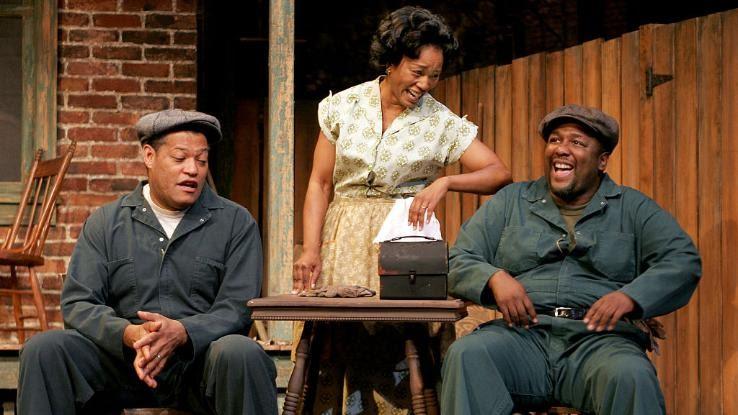Filipino Drama Until We Meet Again

The modern drama is characterized by its unique discipline matter — from the romanticization of the folks living in poverty to a more than strict, grounded depiction of life — too as its detail use of symbols, imagery, and metaphors. Although modern drama has evolved over time, its aim of using theater to claiming and experiment upon social norms remained constant.
Merely what characteristics distinguish a modern drama from a traditional drama?
Traditional Drama:
- Often dealt with supernatural concepts such every bit fate and the role of the gods/God in human diplomacy.
- Characters were often noble, royal, or somehow exalted in position.
- Was very structured and ended with a clear plot resolution.
- Lofty speech, such as poetry or verse, is often incorporated in dialogue.
Modern Drama:
- Often focuses on relatable bug and social bug.
- Characters are usually average, everyday people.
- Doesn't always confine itself to a clear construction and may end without a resolution.
- Features natural, realistic dialogue.
Starting time of Modernistic Drama
While modern drama is sometimes referred to equally "20th-century drama," many argue that it actually began in the late 19th century with playwright Henrik Ibsen. Ibsen is oft referred to equally the "father of modern drama," equally the 1879 debut of his play A Doll's House marks the beginning of the modern theater movement for many scholars. In general, modern drama tends to refer to plays written from the belatedly 1800s to the present twenty-four hours.

A Doll's House was particularly revolutionary because it bankrupt from traditional theatrical forms at a time when both American and European audiences were desperate for something new. Throughout the previous century, the theater had reached a low point in the Western globe — fiction and poesy, on the other hand, flourished.
Between the mid-1700s and mid-1800s, literature soared to new heights thanks to landmark works past novelists like Jane Austen, Charles Dickens and Nathaniel Hawthorne. Meanwhile, the field of poesy was brimful with new talents like Lord Byron, Percy Shelley, John Keats and the at-the-time-unpublished Emily Dickinson. Yet, for the most part, the world of theater was fairly stale.
The fact that Ibsen came from Kingdom of norway, a country that didn't have much of a theatrical history of its own, may have initially appeared to exist his greatest weakness. Only, every bit it turned out, it may accept ended up existence his greatest strength. That is, Ibsen more or less developed his own ideas about what drama should exist, and, consequently, appealed to the rise demand for intellectual theater. The younger generation, in detail, lauded Ibsen's work since they were fed upwards with the injustices of traditional society and eager for more scientific and philosophical views of humanity.
Theory and Elements of Mod Drama
Modern drama caught on quickly as its popularity spread throughout both Europe and America. Soon plenty, myriad works began actualization — and many of them revolutionized each of the five elements of drama, which include:

Thought, Theme, and Ideas:
Theater at large got much more than downwardly-to-earth as modern drama became the norm. Rather than provide mere amusement or repeat so-called fourth dimension-honored lessons of morality, plays began to take more incisive, critical looks at the country of the wold. Playwrights began delving into themes and topics such as:
- Politics
- Social ills and reform
- Women's rights
- Class relations
- Race relations
- Effects of industrialization
- Familial relationships
- Feet, depression and mental health
- The "American Dream"
- The furnishings of war
Activeness and Plot:
Traditional theater tended to autumn nether a few different categories — tragedy, comedy, melodrama, and so on. Moreover, the structure of each genre was pretty rigid. Since the times of Aristotle, many plays followed the classic dramatic structure: disharmonize, rising action, turning point, falling action, and resolution.
While some mod plays follow a like structure, things aren't always so articulate-cutting. Modern plays don't always guarantee a clear resolution, in order to inspire the audience to think for themselves and form their own opinions on what they've just seen. Additionally, some forms of modern absurdist theater — works that could fall into the motility of Dadaism, for example — focused on creativity and innovation, regardless of traditional plot construction.
Characters:
One of the more revolutionary aspects of modern drama in its early days was that it featured characters who would not have been considered important plenty to carry a traditional drama. A Doll'southward House revolves around an ordinary housewife named Nora; Arthur Miller's Death of a Salesman is about a traveling salesman and his family; and Tennessee Williams' True cat on a Hot Tin Roof centers on a man with alcoholism.
Language:
The majority of modern plays use very realistic, natural language. In that location are exceptions, nonetheless, especially amid absurdist forms of modern theater. Bertold Brecht, for instance, was a fan of epic theater, which was based on Greek verse. Samual Beckett, on the other hand, favored theater of the absurd, where the characters sometimes spoke "nonsense talk" as a mode to limited existential malaise. Simply, in most cases, modern theater that doesn't autumn into those categories uses rather colloquial language that reflects its subjects.
Music:
In about of the earliest forms of classical drama, music was an important part of many performances. Lines were alternately spoken, chanted, or sung by a chorus. Music is used in a diversity of different ways in modern drama, depending on the style. Musical theater has go a genre in its own correct, while other modern dramatic pieces either don't apply music at all or use information technology sparingly, such equally to indicate intermission.
Famous Modern Plays
Pygmalion by George Bernard Shaw: While Pygmalion is the often hilarious story of a professor who attempts to transform a Cockney flower seller into a duchess, information technology has some pretty deep social undertones. Shaw shamelessly spotlights the issues arising from the British class system and advocates for women's rights.

Long 24-hour interval'due south Journey into Night past Edward O'Neil: This Pulitzer laurels-winning play is an autobiographical piece in which O'Neil chronicles a day in the life of an American family. It touches on themes ranging from addiction and isolation to the all too real realities of loneliness and emotion.
Rosencrantz and Guildenstern Are Dead past Tom Stoppard: Revolving around two briefly mentioned characters from Shakespeare's Hamlet, this i is a nifty example of absurdism at its finest. The dialogue tin can be purposely difficult to follow and frequently seems to come completely out of left field. This is intended to exist symbolic of how hard information technology is to actually convey significant through advice. At times hilarious, at others tragic, the play constantly forces the audiences to attempt to separate illusion from reality.
Fences by Baronial Wilson: Set in Pittsburgh in the 1950s, Fences follows a Black man named Troy Maxon and his unstable relationship with this family, especially his son, Cory. The play provides the audience with a realistic snapshot of America during the eye of the 20th century and interrogates racism, dear, and responsibility.
What Is Modernistic Drama in Literature?
Much like staged, dramatic works, novels and verse collections written during this time leaned into modernist elements. Not only do examples of modernist literature address social tensions, mental disease, the impacts of war and poverty, and other subjects that impacted everyday readers, just writers of these works experimented with style, too.

From playing with different points of view and harnessing colloquial dialogue to playing with time and structure, these works challenged the limits of what could be done in writing. A few examples include:
Mrs. Dalloway by Virginia Woolf: Published in the wake of World State of war I and the 1918 Pandemic, Woolf's novel takes an honest expect at the life of Clarissa Dalloway, a fictional high-society woman. Set over the course of a 24-hour interval, Mrs. Dalloway details Clarissa's attempts to prepare for a party, merely becomes so much more than that. Featuring a finely drawn interior perspective; a point of view that flits in and out of other characters' minds; and fourth dimension jumps, Woolf's novel is considered i of the greatest English-linguistic communication novels ever written.
The Waste State by T.S. Eliot: Considered i of the most important poems of the 20th century, The Waste Land is a 434-line poem that fuses well-trodden stories, such equally the fable of the Holy Grail and the Fish King, with vignettes set up in and so-contemporary society. In improver to alluding to many classical works, the poem leans into satire; features abrupt changes in terms of who'southward speaking and setting; and is divided into 5 separate sections.
As I Lay Dying by William Faulkner: This Southern Gothic novel is frequently considered ane of the greatest in 20th-century literature. Taking its title from a translation of the Odyssey, the book is centered effectually the decease of Addie Bundren and her poor, rural family unit who are attempting to honor her dying wish: to be buried in her hometown. With xv different narrators, inconsistent affiliate lengths, and a stream-of-consciousness writing style, Faulkner captures the best of what modernist literature has to offer hither.
Other meaning modernist writers, at to the lowest degree in the Western catechism, include Flannery O'Connor, Ernest Hemingway, Katherine Mansfield, Ezra Pound, James Joyce, Oscar Wilde, Franz Kafka and Vladimir Nabokov.
Source: https://www.reference.com/world-view/characteristics-modern-drama-8384aaf8607c93b5?utm_content=params%3Ao%3D740005%26ad%3DdirN%26qo%3DserpIndex

0 Response to "Filipino Drama Until We Meet Again"
Post a Comment